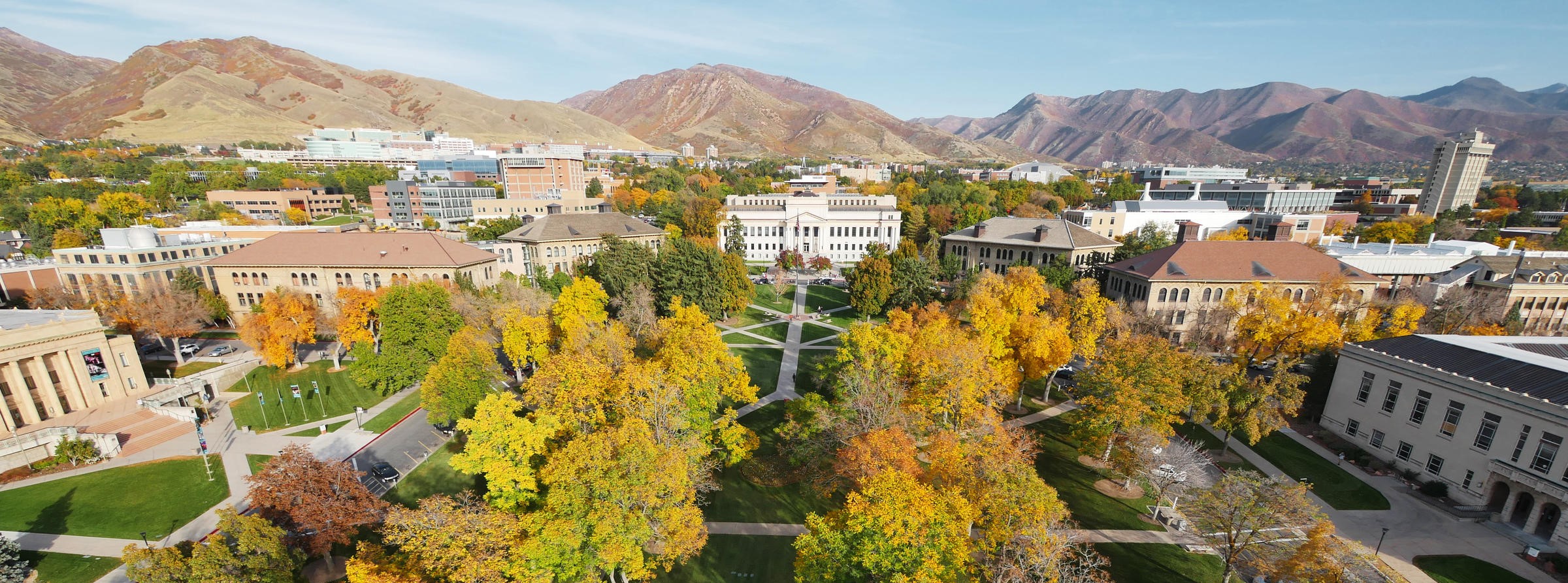News Release
University of Utah one of the state’s largest and most important economic assets, new study shows
April 30, 2020 (Salt Lake City, Utah) – As the University of Utah’s Class of 2020 prepares to participate in a “virtual” General Commencement today, the Kem C. Gardner Policy Institute released a new study that details the immense economic and societal footprint cast by the U in the state.
The study’s authors estimate the U’s direct employment of 39,300 jobs makes it the largest employer in the state. Further, they estimate the U directly and indirectly supports in Utah 83,100 jobs, $4.6 billion in earnings, and $6.3 billion in GDP. These impacts come at a time when University of Utah Health and other functions at the U provide critical support to Utahns and state leaders in the battle to confront the COVID-19 health and economic crisis.
Examples of the immense reach of the U in 2019 include the education and patient care of 32,994 students, 8,268 degrees and certificates, more than 550 buildings, 15.4 million square feet of real estate in 16 counties and 38 cities in Utah, and approximately two million patient visits.
“One of our unique features is that we have a full academic medical center on a comprehensive campus and we are together physically,” said Ruth V. Watkins, president of the University of Utah. “That positions us well to have a major impact on the state’s economy. We are very proud of our role as the flagship research University of Utah, providing jobs, vital research and innovation. We’re equally proud of what we contribute as the University for Utah in serving our community through health care services and meeting the workforce needs of Utah businesses, as this report shows.”
The report includes an analysis of the U’s economic significance in two ways: economic contribution and societal benefits. Highlights from the report include the following:
Research – In 2019, the U received $547 million in total research funding, making the U, by far, the largest recipient of research funding in the state.
Real estate – The U owns and manages more than 550 buildings tallying 15.4 million square feet of institutional space, in 16 counties and 38 cities throughout Utah, extending into six states and Washington D.C.
Patient care – The reach of U of U Health includes five hospitals, 12 community health centers, five schools and colleges, a library, one of the nation’s largest reference laboratories (ARUP Laboratories), and numerous institutes and centers.
Arts and entertainment –The U is home to a variety of arts and entertainment venues, including Kingsbury Hall, Simmons Pioneer Memorial Theater (and the Pioneer Theatre Company), Red Butte Garden, the Utah Museum of Fine Arts, Rice-Eccles Stadium, and the Huntsman Center. The U joined the Pac-12 Conference in 2010 and currently has many nationally ranked athletic programs.
Societal impact – Individual and societal benefits to Utah associated with a college education include, among others, increased earnings, increased economic mobility, healthier lifestyles, decreased crime, increased volunteerism, increased voter participation, reduced reliance on public assistance, and reduced poverty rate.
The expanse of the U’s mission has been recognized by the Association of American Universities (AAU). In 2019, the AAU invited the U to join its prestigious membership, which includes other well-recognized universities in North America, including Harvard University, Massachusetts Institute of Technology, Stanford University, and Yale University.
In addition to serving as Utah’s flagship university, University of Utah Health serves as the state’s only academic medical center and provides patient care for the people of Utah, Nevada, Idaho, Wyoming, Montana, and much of Nevada. In 2019, U of U Health directly and indirectly supported 47,500 jobs, $3.0 billion in earnings, and $3.9 billion in the Utah economy.
“At U of U Health, we serve the people and the state of Utah. We do this as one of the state’s largest employers, educators, researchers and health care systems. As a partner with our community, we strive to elevate the quality of life and health in Utah,” said Dr. Michael Good, CEO of University of Utah Health. “Our talented teams bring to Utah hundreds of millions of dollars in out-of-state grant funding, and also patient care revenue from patients who travel to Utah for world-class care. These dollars directly create and support jobs and tax revenues for the state. This report highlights the fact that bioscience is a job creating, economic multiplier that improves human life.”
Both reports on the economic contribution of the University of Utah and University of Utah Health are now available online.






